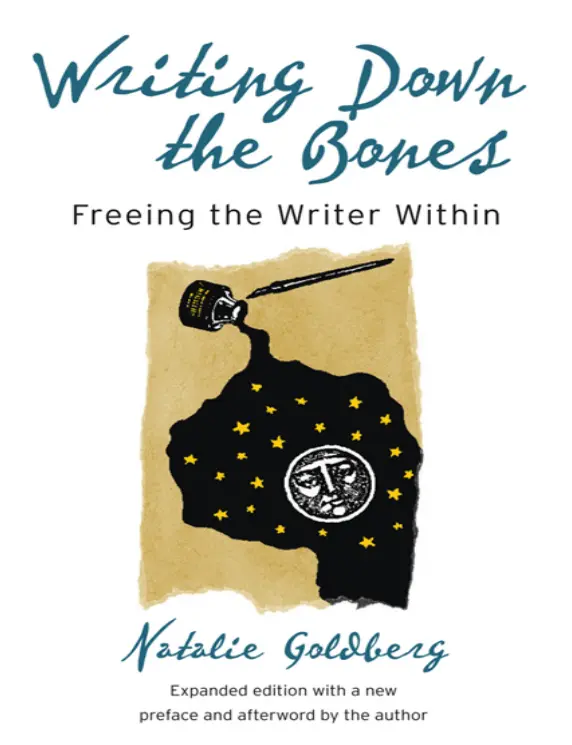
Our bodies are garbage heaps: we collect experience, and from the decomposition of the thrown-out eggshells, spinach leaves, coffee grinds, and old steak bones of our minds come nitrogen, heat, and very fertile soil. Out of this fertile soil bloom our poems and stories. But this does not come all at once. It takes time. Continue to turn over and over the organic details of your life until some of them fall through the garbage of discursive thoughts to the solid ground of black soil.
Short Summary:
“Writing Down the Bones: Freeing the Writer Within” is Natalie Goldberg’s groundbreaking guide to writing practice, first published in 1986. Unlike conventional writing manuals focused on technique, Goldberg’s book presents writing as a spiritual practice akin to Zen meditation – a path to awakening the authentic voice within.
Drawing from her background as both a writer and Zen practitioner studying under Katagiri Roshi, Goldberg merges Eastern spirituality with Western creativity in short, accessible chapters that function as meditation talks on writing. Her fundamental premise is revolutionary: writing is not primarily an intellectual endeavor but a physical, emotional, and spiritual act that engages the whole person.
At the heart of Goldberg’s approach is what she calls “writing practice” – timed, focused writing sessions where you “keep your hand moving, don’t cross out, don’t worry about spelling, punctuation, grammar, lose control, don’t think, go for the jugular.” This method, inspired by Zen sitting meditation, aims to bypass the inner critic and connect directly with what she calls “first thoughts” – the raw, unfiltered energy of the mind before conventional thinking intervenes.
Goldberg insists that regular practice itself is the goal, not creating polished work. Just as a runner runs daily whether preparing for a marathon or not, the writer practices writing regardless of publication aspirations. Her famous instruction “Give yourself permission to write the worst junk in America” liberates writers from perfectionism and unblocks creativity.
Throughout the book, Goldberg tackles common writing obstacles with concrete solutions. For those claiming they have nothing to write about, she provides lists of prompts and the reminder that “if you walk into a café full of people, you can’t miss stories.” For those struggling with discipline, she suggests creating rituals that signal to the mind it’s time to write – a specific notebook, pen, café, or tea that becomes associated with creative flow.
Goldberg addresses deeper issues as well: the challenges of mining personal experience without getting lost in emotion, the balance between discipline and spontaneity, and the courage needed to “stand at the edge of something you fear and have the guts to take the step into it.” Her chapter on obsessions encourages writers to “go for the jugular” by confronting recurring themes rather than avoiding them.
The book’s style embodies its teaching – direct, honest, and rooted in concrete detail. Goldberg shares personal anecdotes about her Jewish family in Brooklyn, her Zen practice in Minnesota, and the cafés where she writes, demonstrating how ordinary life becomes extraordinary through attentive observation. She repeatedly emphasizes the power of specific details: “Don’t tell readers that the old man was sad; describe his face, his clothes, what he said.”
“Writing Down the Bones” revolutionized writing instruction by removing it from purely academic contexts and making it accessible to anyone seeking self-expression. Goldberg demystifies the writing process, presenting it not as a talent bestowed on the chosen few but as a practice available to all. Her ultimate message is empowering: trust your own mind, dive beneath surface thoughts, and write from the core of your being. As she says, “Writers live twice” – once in the moment and again through their words.